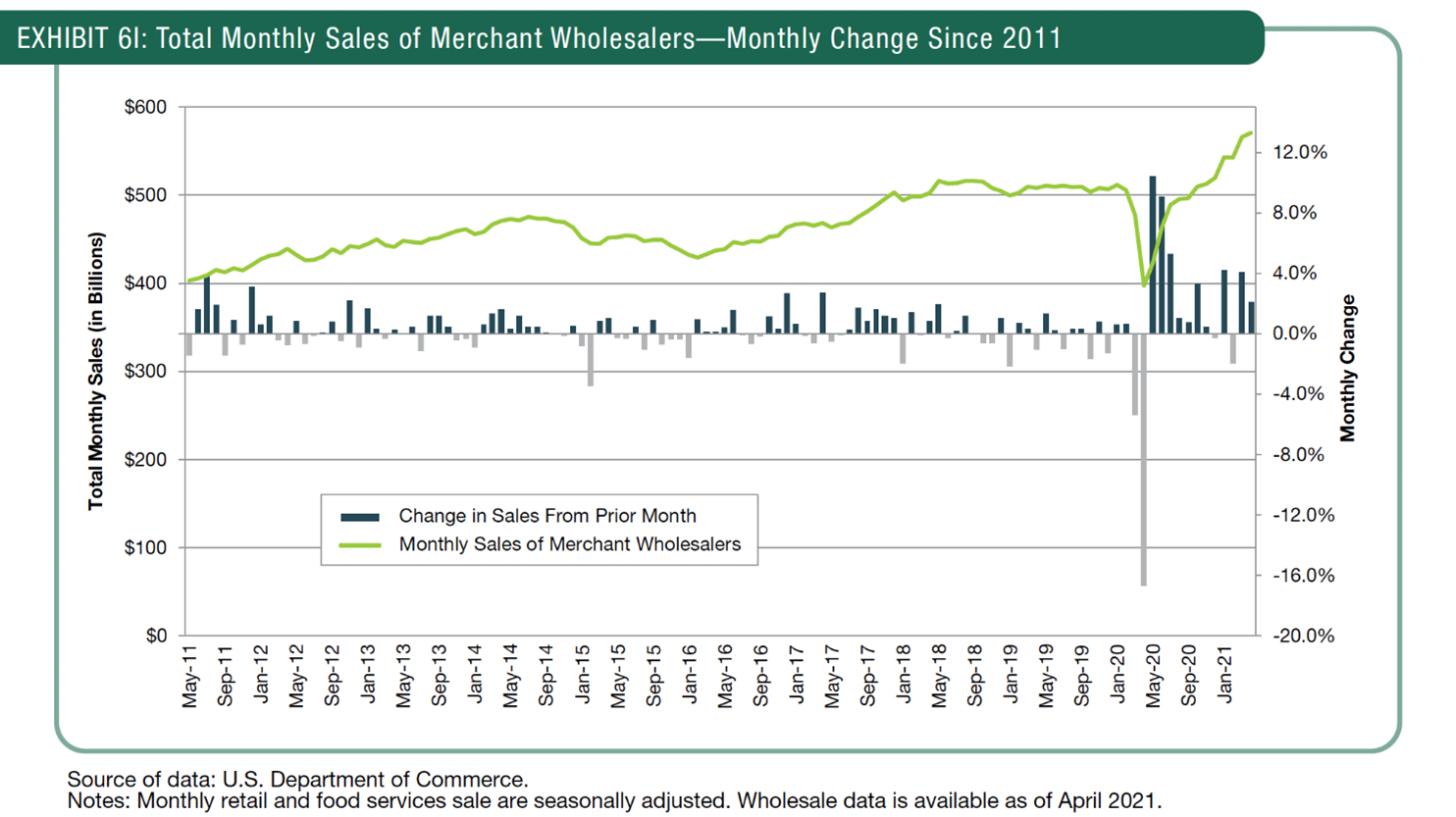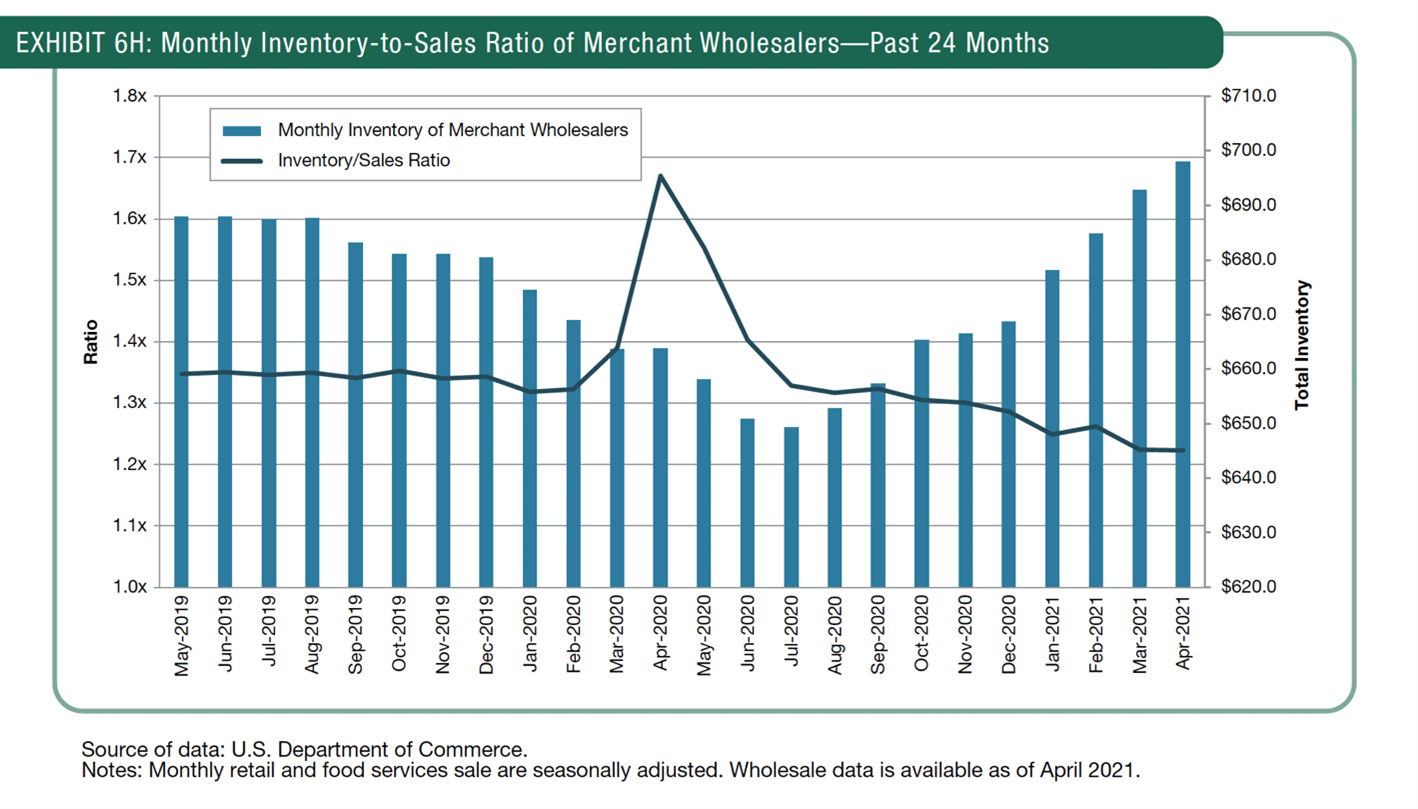Wholesale Trade: Sales and Inventories
In the May issue of the Economic Outlook Update (EOU), the publication added data highlighting the wholesale trade segment of the U.S. economy, putting a spotlight on the data the U.S. Census published. The report highlights the sales totals of merchant wholesalers for April 2021, which included adjustments for seasonal variations and trading day differences. The report showed an improvement in wholesale trade in April 2021 when compared to March 2021 and from one year ago. In April, total sales were $570.8 billion, or 0.8% higher than the revised March level and 43.6% higher than the level from one year ago.
The report breaks down wholesale trade figures into durable and nondurable goods. In April, within durable goods, the metals sector (based on NAICS code) saw the largest monthly increase, at 5.6%, followed by the electrical sector, at 3.6%, and the lumber sector, at 3.2%. The increases within these sectors are related to the growth in the construction sector, particularly within the housing segment, with the EOU highlighting housing starts growth of 67.3% and building permit growth of 60.9% in April when compared to the period from one year ago, signaling the demand for construction materials in April and for future months as construction projects begin. Overall, durable goods rose 2.1% when compared to March and by 44.9% from one year ago.
Wholesale trade of nondurable goods declined 0.3% in April but rose 42.4% from one year ago. The annual increase came as a result of the easing of coronavirus restrictions and lockdowns as well as the latest round of economic stimulus payments. Retail sales increased by 9.8% in the month prior. Wholesale trade in apparel rose 6.3% in April. Wholesale trade also increased in the sales of alcohol products, by 3.5%, with the EOU tying in the reopening of the hospitality sector with the rise in jobs in the leisure and hospitality sector to 331,000.

Inventory-to-Sales Ratio
The inventory-to-sales ratio, or the metric that supply chain firms use to measure the amount of inventory being carried compared to the number of sales orders being fulfilled, came in at 1.22x in April, which is unchanged from the ratio in March but down from 1.67x from one year ago. Typically, an improvement is measured by either a low or decreasing ratio.
Within the durable goods segment, the inventory-to sales ratio improved in April, ticking down to 1.49x from 1.51x in March and from 2.12x from one year ago. Wholesale trade of computer equipment had the lowest ratio, at 0.75x, and machinery had the highest, at 2.48x, within the durable goods segment. Wholesale trade of nondurable goods saw a minor increase in its inventory-to-sales ratio, to 0.97x from 0.96x, in March. Notably, wholesale trade of petroleum products had a ratio of 0.37x.

Download the full May 2021 report for more economic data
Download the complete May 2021 issue of the EOU to see more stats on wholesale trade, GDP, consumer spending, stocks and bonds, the real estate market, and more. Plus, learn about an annual subscription to the EOU, an ideal resource for the current economic conditions section of your valuation report.
